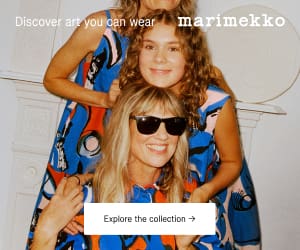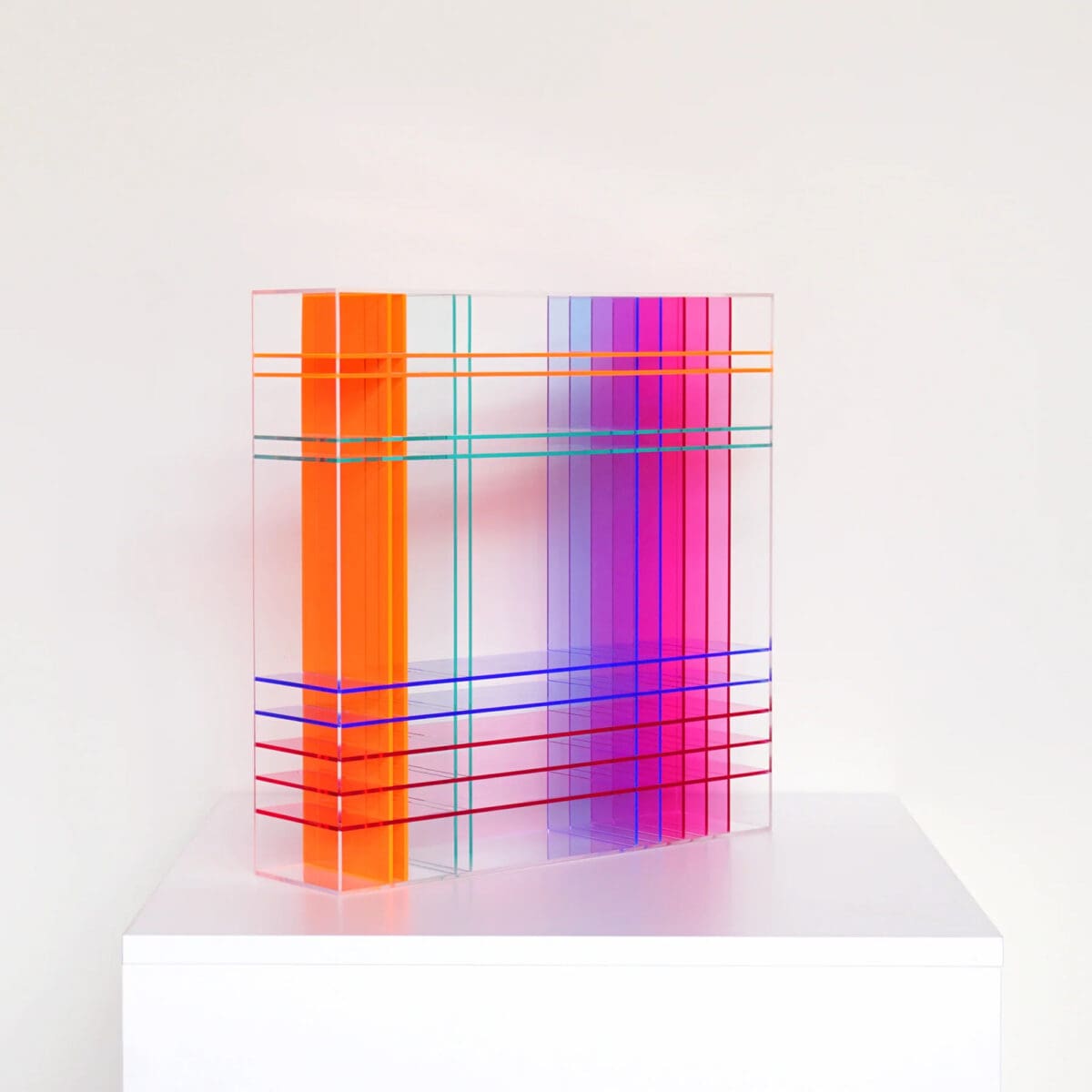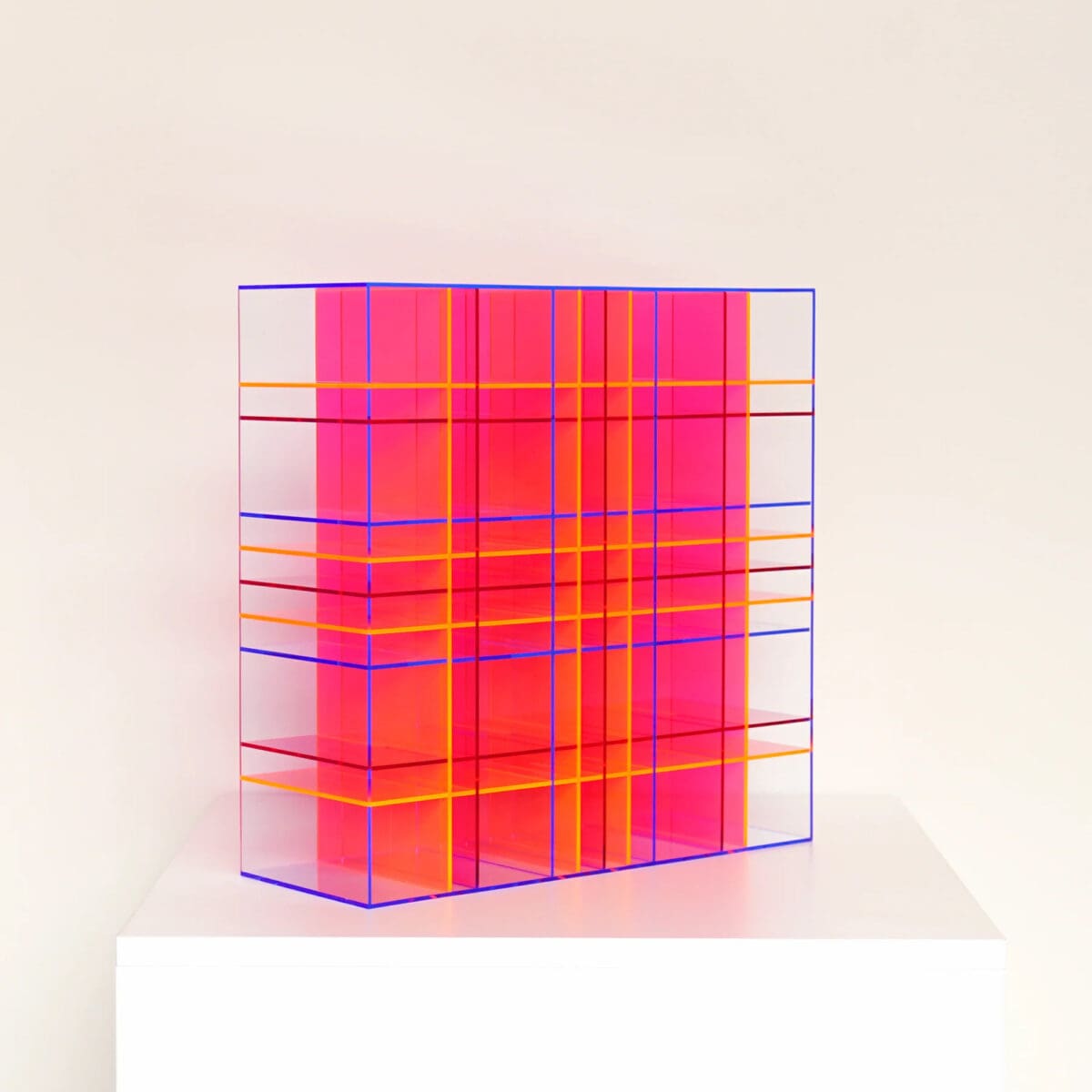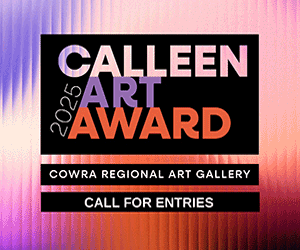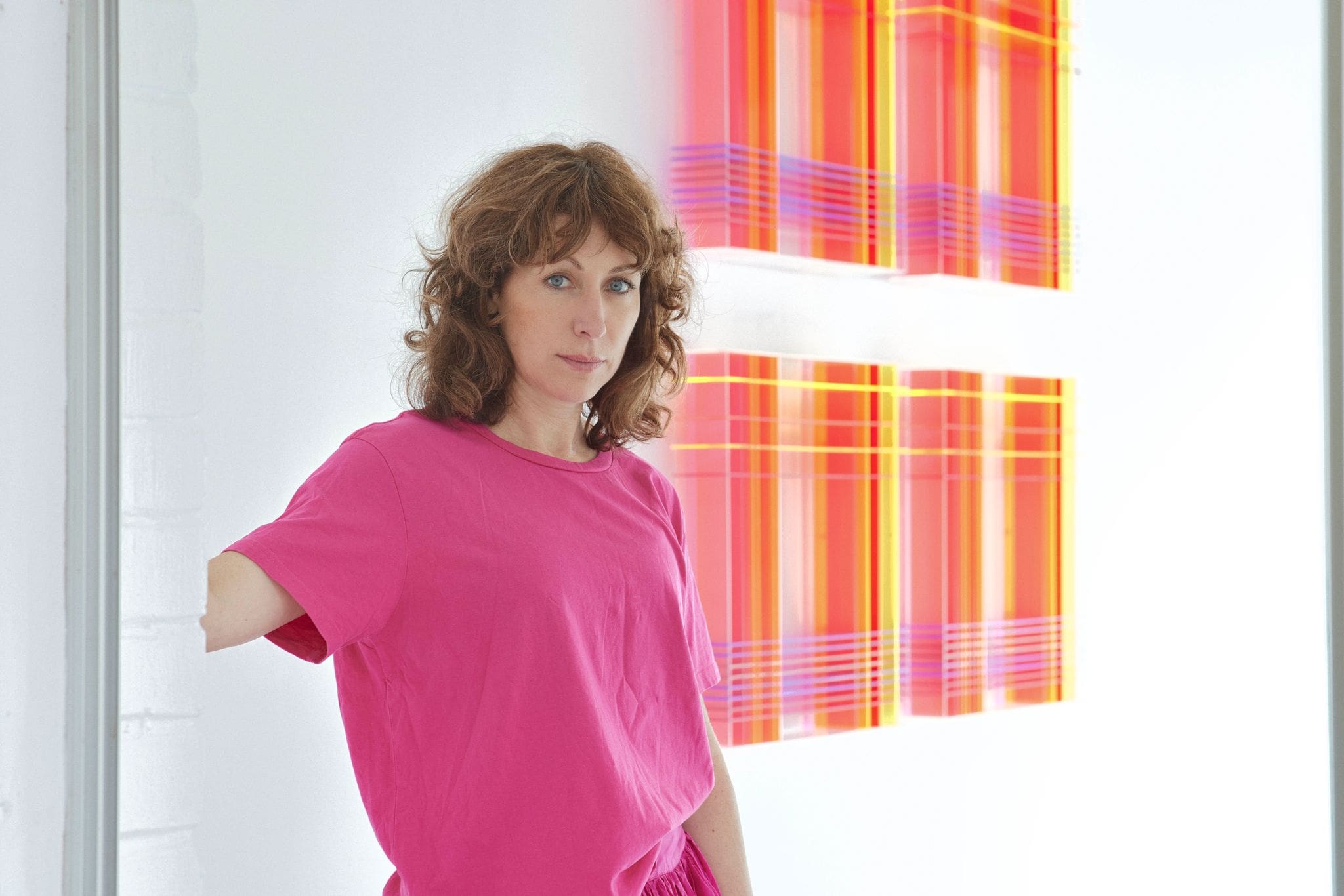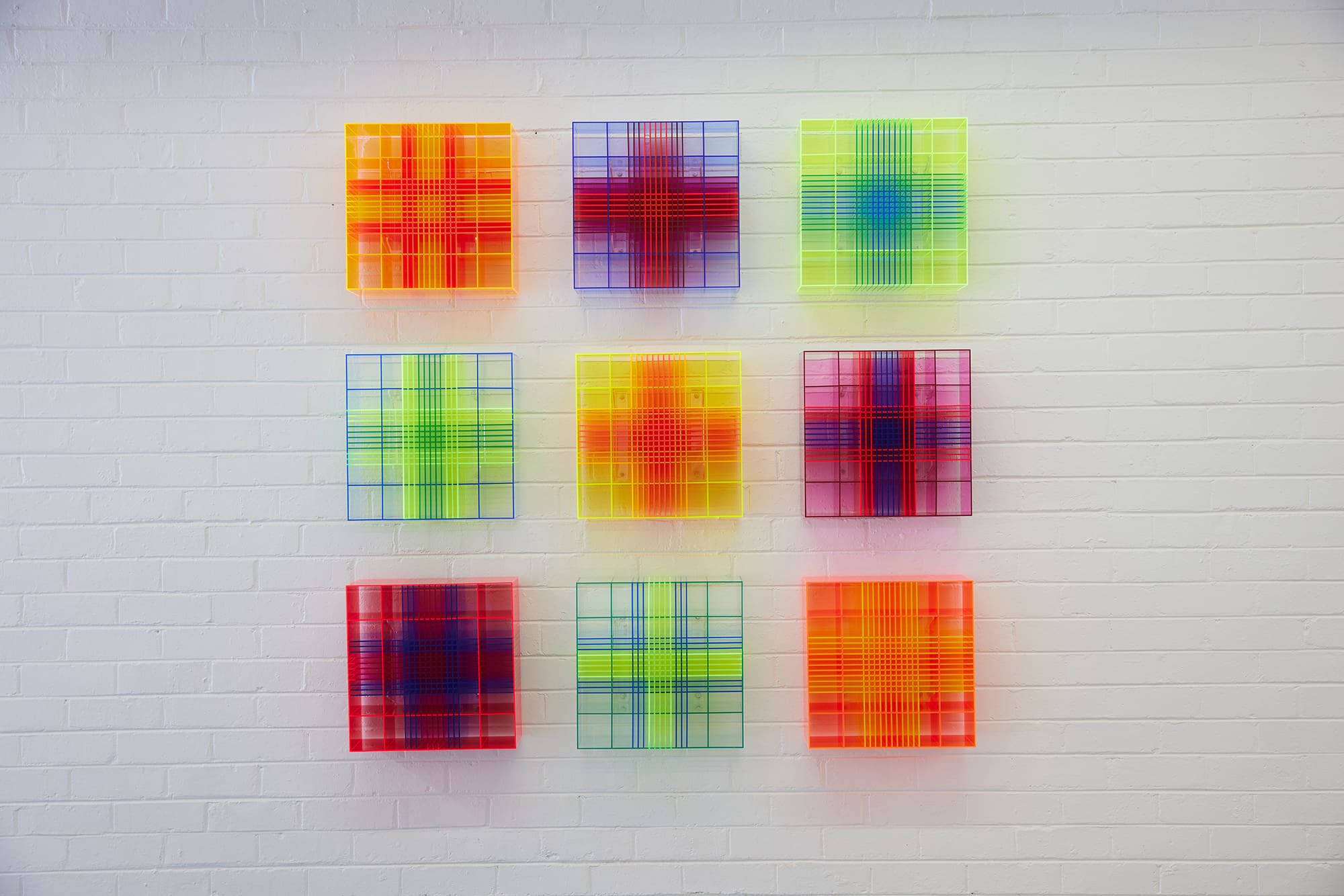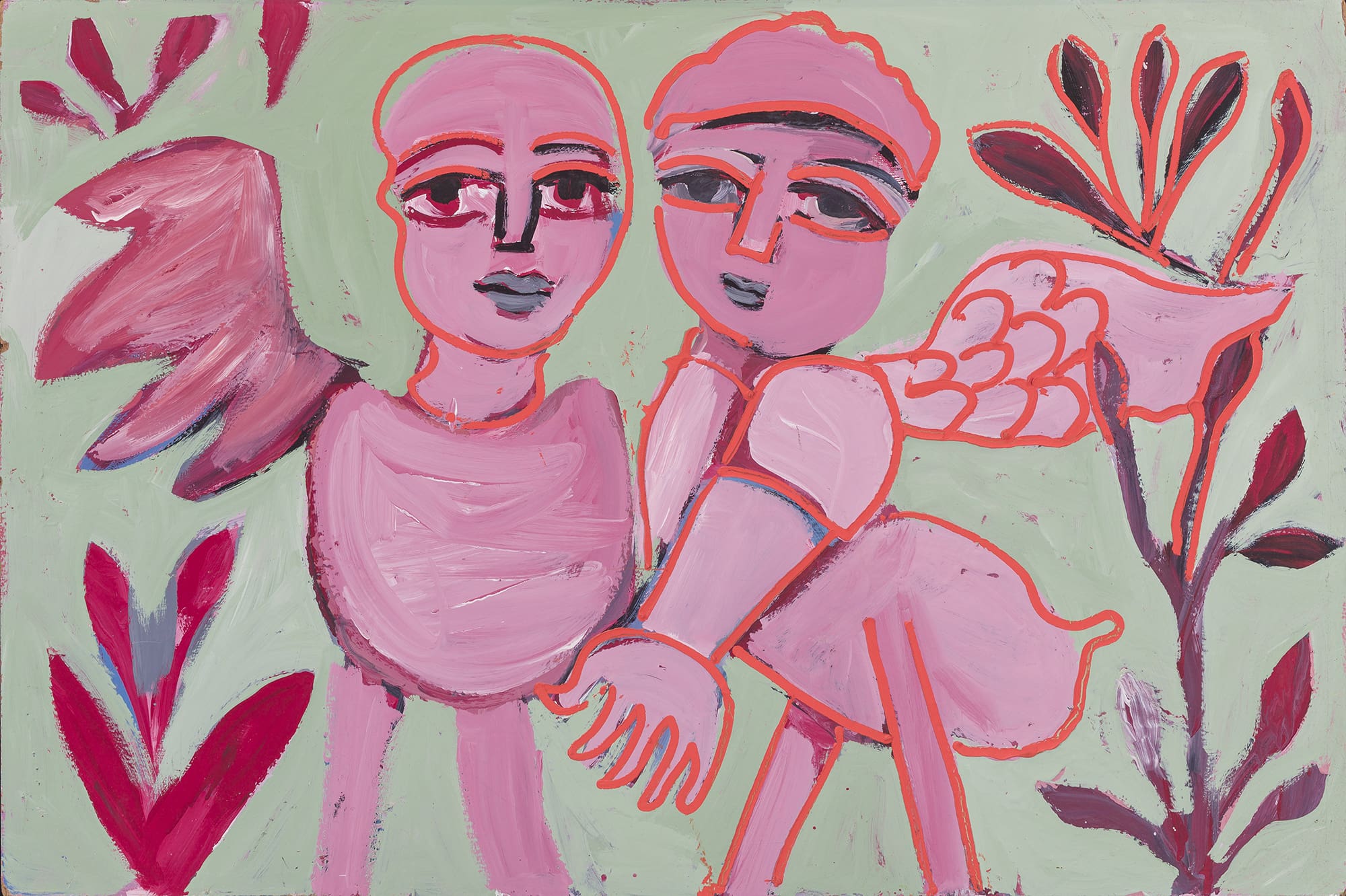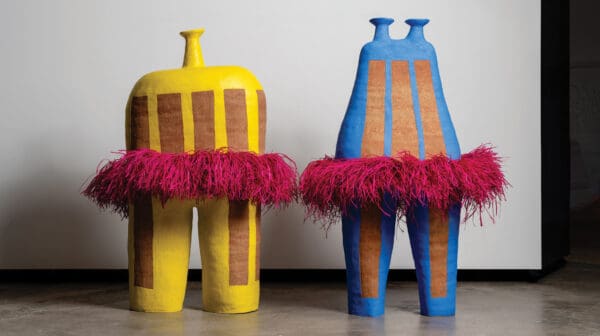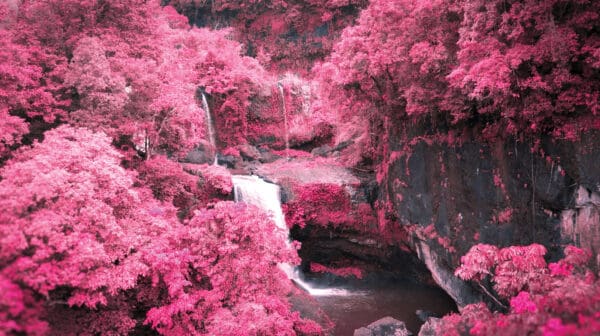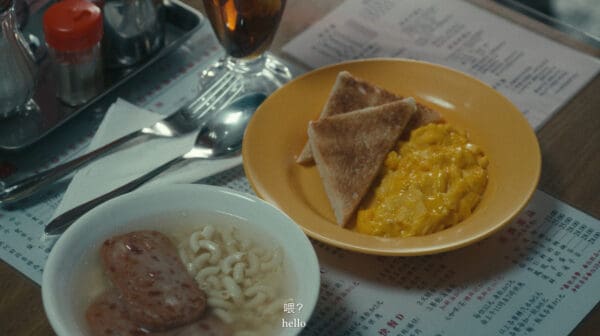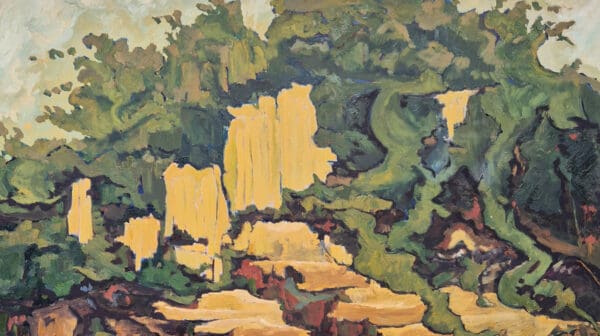Lisa Gorman has always looked to art as inspiration. The Gorman founder and former creative director, who departed the eponymous fashion label after 22 years, is starting a new chapter as a multidisciplinary artist, drawing on her love of colour and textiles to create luminous sculptures.
At Warrnambool Art Gallery, in a show curated by director Aaron Bradbrook, Gorman’s sculptures, plus her large-scale, site-specific installation, are being exhibited alongside the art of Mirka Mora, including Mora’s doll-like creatures, paintings, and rarely exhibited tapestries. The two artists’ visions of celebrating life, ‘joie de vivre’, and imagination are united through a selection of garments from their Gorman X Mirka Mora collaborations in 2016 and 2018.
Drawing inspiration from the two fundamental components of weaving, the warp and weft, Gorman’s latest work captures a “reimagined weaving dimension”, mirroring the intersection at which her life currently stands: holding both change and new opportunities.
For this exhibition, you’re drawing from your love of colour and experience with textiles, specifically the process of weaving. Can you talk about that process?
My curiosity with the formation of new and unknown colours inspired me to create these sculptures. I was interested in the idea of textiles translated in a new medium with the added elements of translucency and light. The colours shift throughout the day depending on the light.
“The rigid, acrylic material was used to emphasise the woven structure, almost as though the viewer is observing a section of tartan cloth through a magnifying glass.”
When I decided to actually sit down and embark on my acrylic sculpture idea, the process of working solo was my first challenge. I had to get used to working on my own, without a large team, so initially it was quite challenging. I needed to get closer to what I was creating, and I didn’t want the restraints of commercial design as it had been such a long time since I sat down and made something purely for myself, to fulfill an idea. I wanted to tap into that ‘raw creativity’ again. I spent 18 months just trying to work out how to take it from concept to three-dimensional form—how does it stay together, what are the weight constraints, how are the colours interacting. The rigid, acrylic material was used to emphasise the woven structure, almost as though the viewer is observing a section of tartan cloth through a magnifying glass.
You were one of the first fashion designers in Australia to collaborate with artists, and it became a signature of the Gorman brand. Who was the first artist you collaborated with?
It was Rhys Lee, who is a friend of mine. He initially said no to collaborating, as he thought it would devaluate and make his work commercial. When I spoke to him later, he decided to re-think the proposal. He made it clear that he didn’t want to use existing works and suggested creating exclusive artworks for the collaboration with Gorman. He created a pattern using ink and paper with textiles in mind and thought about the application in repeat for apparel and textile. That first capsule collection was a huge success, and it drew attention to both Rhys’s work and the label.
You formed a collaboration with Mirka Mora in 2016, and then again in 2018—what drew you to her work?
I first saw Mirka’s work when I visited her café and gallery, Tolarno, which is now a hotel, in St Kilda. I love the mystical creatures, wide-eyed children, serpents, angels, devils, and other elements which don’t belong to our physical world. Her paintings and drawings have this translucent quality which is so fascinating. They are inflected with fantasy, uniting personal and mythological themes. She painted a lot of white over colour and she also had a history in textiles. Mirka went from painting these incredible otherworldly creatures to creating soft-sculpture dolls, which took a three-dimensional form. She was trained in theatre and mime, and as an adult she also collected antique dolls, before she finally started creating them herself in 1970 out of paint and cloth.
You were the founder and then creative director of Gorman for 22 years. Can you talk about the many collaborations which became the label signature, and what they meant to you as a creative?
Collaboration evolved over the years for me. I got really excited about collaborating not only with painters and graphic artists, but it also became an opportunity to explore other mediums which weren’t available for me in the fashion arena. I was collaborating with Charlie Sandford, who is a woodturner, then I collaborated with the Melbourne Museum, who granted access to their gems archives, and then a further collaboration with the Mangkaja Arts Resource Agency Centre. After years of collaborating with other creatives, it became a signature of the Gorman brand. More recently, before departing from the label, I collaborated with Mirka Mora, who was a huge inspiration.
What else inspires you?
I’ve always been very inspired by art, pattern, bold colours, graphics, and textiles.
Do you have any favourite artworks at home?
A collection of paintings and sculptures by Rhys Lee, a small angel painting by Mirka Mora, rope artwork by Dani Marti, a painting by Chris Humphries, digital print photographs by Marian Drew, and a lithograph by Boris Bucan.
“Growing up I loved drawing, I would spend the weekends drawing in my sketchbook. I would draw things like garden gnomes and mushrooms, my own ‘micro world’.”
What are your memories of growing up? Were there any artistic talents in the family?
I grew up in a family with three sisters. Both my parents were supportive of our creativity, but Dad in particular, he was a nurse and worked with women all day long, so he was really in touch with feelings, emotions, and humanity—and he always supported and amplified our voices as women. I lived a very female-centric life in some ways and with that came a reassuring level of protection; I feel quite privileged and very lucky to have never felt suppressed as a woman. I now have two daughters myself, and I am thinking more about that and how to nurture that in them as well.
My grandma on my mum’s side, Jean, worked at Myer as a calligrapher. She was incredible, she would use inks and those really big brushes to paint all the signage. Growing up I loved drawing, I would spend the weekends drawing in my sketchbook. I would draw things like garden gnomes and mushrooms, my own ‘micro world’. Now that I think of it, it seems kind of amusing, I can see the connection to what Mirka drew; I never draw a reality. I also loved sewing, but I was very bad at following patterns—I just wanted to make things and experiment.
Which other women artists inspire you?
Kaylene Whiskey, Hilma af Klint, Miranda Skoczek.
What is the best advice you have ever been given?
When I started the Gorman brand, someone said to me, “When you don’t know how to do something, find someone that does.” That was great advice because creatives are not always the best bookkeepers.
Do you have a favourite book which expanded the way you think?
I don’t know that this is particularly the right answer, but my awe and wonder when someone showed me the Pantone book [a colour guidebook] was profound. The big version with the textile swatches. The fact that colour is coded and explainable knocked my socks off.
What drives you as an artist to keep exploring new ideas?
The same thing that drove me to work with many different artists during my time at Gorman brand—a curiosity around materials and mediums, what I might be able to do with them and how they perform in unexpected situations, and an outright desire to make things.
LISA GORMAN + MIRKA MORA: To breathe with the rhythm of the heart
Warrnambool Art Gallery (Warrnambool VIC)
18 November—17 March 2024
This article was originally published in the November/December 2023 print edition of Art Guide Australia.

